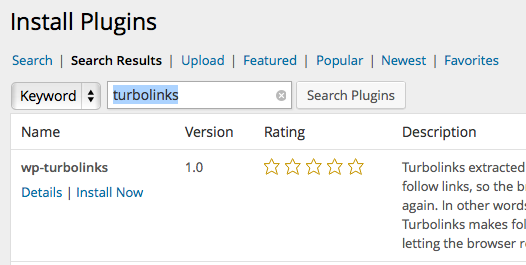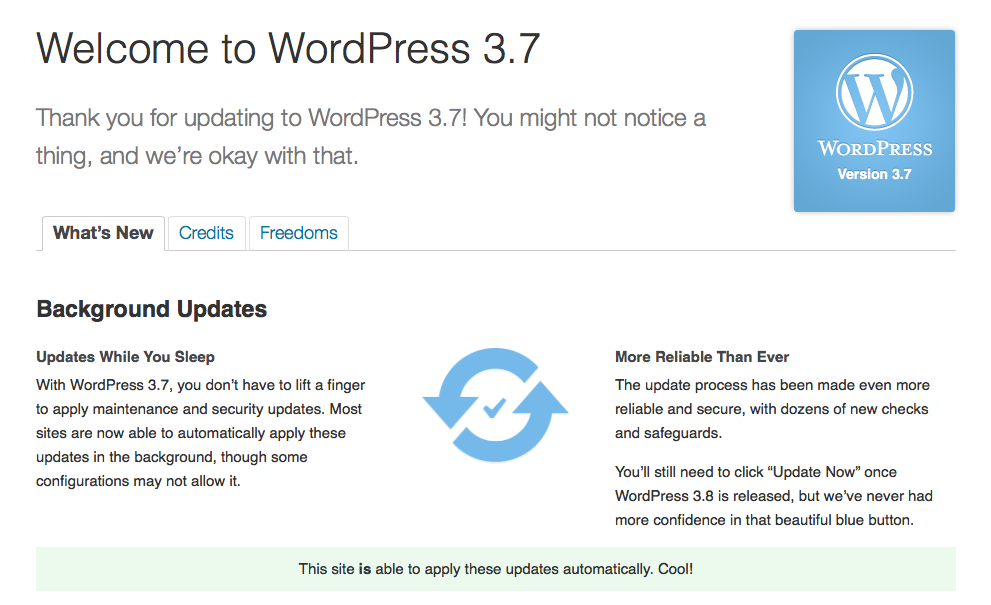Update 2014/4/17: This site now runs WordPress 3.9, which seems to be working fine with HHVM. Also, compatibility has improved, thanks to a patch in the WordPress core specifically for HHVM.
I recently posted about how I switched out PHP-FPM (PHP’s FastCGI pool) for HHVM. Today I’ll be talking more about the install process on the server, and using it to set up WordPress.
What is HHVM?
This is usually what happens in a (successful) startup[footnote]Twitter is (in)famous for its use of Ruby on Rails, which eventually had to be re-written in Scala, a language that runs on the JVM.[/footnote]:
- Initial codebase is written in an interpreted language, trading agility and developer productivity for slower response speeds and increased CPU usage on the servers.
- The service sees new users coming in and the initial codebase becomes strained.
- The service scales up the number of servers, but hits a wall.
- The codebase is re-written, either wholly or partially, in to a more performant and efficient language.
Facebook did steps 1 to 3, but refused to do step 4. Compiled languages, while having strengths in performance and efficiency, are usually harder to program in than interpreted languages. So, Facebook made something called HipHop for PHP. HipHop for PHP, or HPHPc for short, compiles PHP into C++, then compiles that into a big binary file. This allows PHP developers to do what they do best — develop in PHP, without worrying (too much) about performance.
As Facebook grew even more, HPHPc began to show its limitations[footnote]Compile time, compiled binary size, lack of MARKDOWN_HASH0f953f8e8cc058300e5041e6f079ab63MARKDOWN_HASH and MARKDOWN_HASH346e614b0b5901e8cdf0ca89b1b3950cMARKDOWN_HASH support, to name a few.[/footnote].
Out of this, came HHVM. HHVM is short for HipHop Virtual Machine, and uses a Just-in-Time (JIT) compiler to run PHP code. The main benefit developers do not need compile the whole binary every time they want deploy new code. With HHVM, Facebook has also worked towards full PHP 5.5[footnote]Wow HHVM is fast…too bad it doesn’t run my code[/footnote] support, support of create_function() and eval(), enabling the majority of PHP application frameworks to work with HHVM.
This includes…
WordPress
WordPress is written in PHP, and runs very well on HHVM. Previously, getting WordPress to work on HHVM required some patches to the core code[footnote]Getting WordPress running on HHVM « HipHop Virtual Machine[/footnote], but these issues have been resolved.
I’ve been running this blog on HHVM for about a week now, and response time is consistently 10x faster than before — 100x if using something like Batcache.
Installation
This server is running CentOS 6.3. While there are packages with HHVM pre-compiled, these packages are not officially supported by Facebook, and are usually compiled by individuals. Your mileage may vary, but package conflicts prevented me from installing any pre-compiled HHVM packages — so I had to compile it myself.
If you plan on running a server with HHVM from scratch, I highly recommend using Ubuntu, and the official precompiled packages for Ubuntu 13.10 / 12.04.
Bugs / Things to watch out for
Because HHVM is not PHP, you may occasionally run into unexpected behavior. Here are some problems I had while setting this site up:
No MySQLi support — this means tools like phpMyAdmin and database backup plugins that rely on MySQLi won’t work. Edit: HHVM 3.0 and above have MySQLi built in.- In the WordPress “General Settings” area, setting “Timezone” to something like “Asia/Tokyo” caused WordPress to crash. The “UTC +/- (hour)” settings seem to work fine.
That’s all, for now. When I run into more problems, I’ll make sure I post about them (with a workaround, if available).




